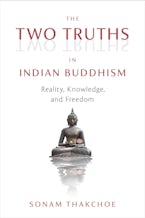- Home
- religion
- biography & autobiography
- social science
- Be the Refuge

Be the Refuge
Raising the Voices of Asian American Buddhists
By: Chenxing Han
344 Pages
- Paperback
- ISBN: 9781623175238
- Published By: North Atlantic Books
- Published: January 2021
$17.95
Chenxing Han’s Be the Refuge: Raising the Voices of Asian American Buddhists makes a timely intervention in Buddhist studies, American religions, and Asian American studies. It is the first ethnographic study that showcases a so-far invisible section of the American Buddhist community: young Asian American Buddhists. In addition to “raising the voices” of the Asian American Buddhist majority, this study also offers a much needed new framework in understanding the fast-growing American Buddhist landscape: generational status (multi-gen, second-gen, first-gen). The lens of generation is illuminating not only because it exposes the racist past and present in American Buddhism but also because it takes seriously both the shared experience of religio-racial othering as Asian immigrants negotiated with a white Christian nation-state and the generational differences as Asian immigrants navigated different immigration policies, migration routes, and economic realities.
Organized according to generational status, the book showcases a rich array of untold stories in the making of American Buddhism. Part 1, “Trailblazers,” celebrates the contribution of many generations of Japanese Jodo Shinshu Buddhists in transplanting Buddhism into the American religious landscape. These stories are not entirely new. One can readily find them in earlier scholarship, which is most recently collected and reviewed by Adeana McNicholl’s methodological reflection “Buddhism and Race in the United States” (Religion Compass, 2021). However, Han’s lens of generation casts these stories in a new light. By centering Asian American experiences, it raises a set of intriguing questions: If Asian American Buddhists have been here all along, then why are they so invisible? What could have been the structural features and individual factors that have enforced this century-long invisibility of an Asian Buddhist majority?
Parts 2, 3, and 4 continue to explore these questions through ethnographic interviews of eighty-nine young Asian American Buddhists. Han’s research focuses on two inquiries: “Where are all the young adult Asian American Buddhists, and what can we learn from them?” (15). Parts 2 and 3 reveal to us the diverse experiences of these young adult Asian Buddhists. Part 2, “Bridge-Builders,” examines the obstacles faced by the second-generation Asian American Buddhists raised by their first-generation immigrant parents. It further showcases how this diverse group overcame different barriers and how they find ways to reclaim Buddhism on their own terms. Part 3, “Integrators,” explores the dilemmas and erasures experienced by Asian American converts, the first-generation Buddhist innovators who must navigate the American Buddhist spaces drown out by white voices.
Part 4, “Refuge-makers,” takes seriously the epistemic advantage of these religious innovators and showcases their diverse views on the poignant question of “why they are so invisible” not only to the mainstream but also to each other (186). It shouldn’t surprise the readers that these refuge-makers are acutely aware of their own invisibility, and many argued that this invisibility is not of their own doing; instead, they have been and continue to be invisibilized (174–186). In attending to the strategies and tactics that these young American Buddhists have invented to overcome the structures that deem their communities inauthentic and dismiss their way of knowing and being, Han’s vivid storytelling shatters the racialized stereotype of “the superstitious Asian Buddhist” and instead celebrates their agency and innovation in the making of American Buddhism.
In addition, Part 4 also takes on an activist stance: writing into being an Asian American Buddhist community and its history. By interweaving scholarly debates on the issue of invisibility with the voices of these young adults, Han powerfully demonstrates that these young Asian Buddhists have much to teach scholars about the structural constraints and social forces that have erased their experiences and silenced their voices. These religious innovators also compel scholars of American Buddhism to think harder on how research methods must be updated to provide the means and the space for this invisiblized majority to write themselves back into existence.
In sum, Han’s monograph is a welcome addition to the recent scholarly effort to go beyond the racial myopia in American Buddhism. Notably, because Han writes for a general public, the impact of her monograph reaches beyond academia: Scholars of Buddhism and graduate students of religious studies alike will find the rich ethnographic details informative about the lived experiences outside the textual world of Buddhism. Undergraduate students and general readers alike will find the stories relatable, revealing, and thought-provoking. More appreciably, Han’s elegant prose and vivid narration will engender many frank conversations about race and religion in undergraduate courses related to global Buddhism, American religions, and Asian American studies.
Jessica Xiaomin Zu is an assistant professor of religion at the University of Southern California Dornsife.
Jessica ZuDate Of Review:June 20, 2021
Chenxing Han is a Bay Area-based writer whose publications have appeared in Buddhadharma, Journal of Global Buddhism, Lion’s Roar, Pacific World, Tricycle, and elsewhere. She holds a BA from Stanford University and an MA in Buddhist studies from the Graduate Theological Union. After studying chaplaincy at the Institute of Buddhist Studies in Berkeley, California, she worked in spiritual care at a nearby community hospital in Oakland. Be the Refuge is her first book.











